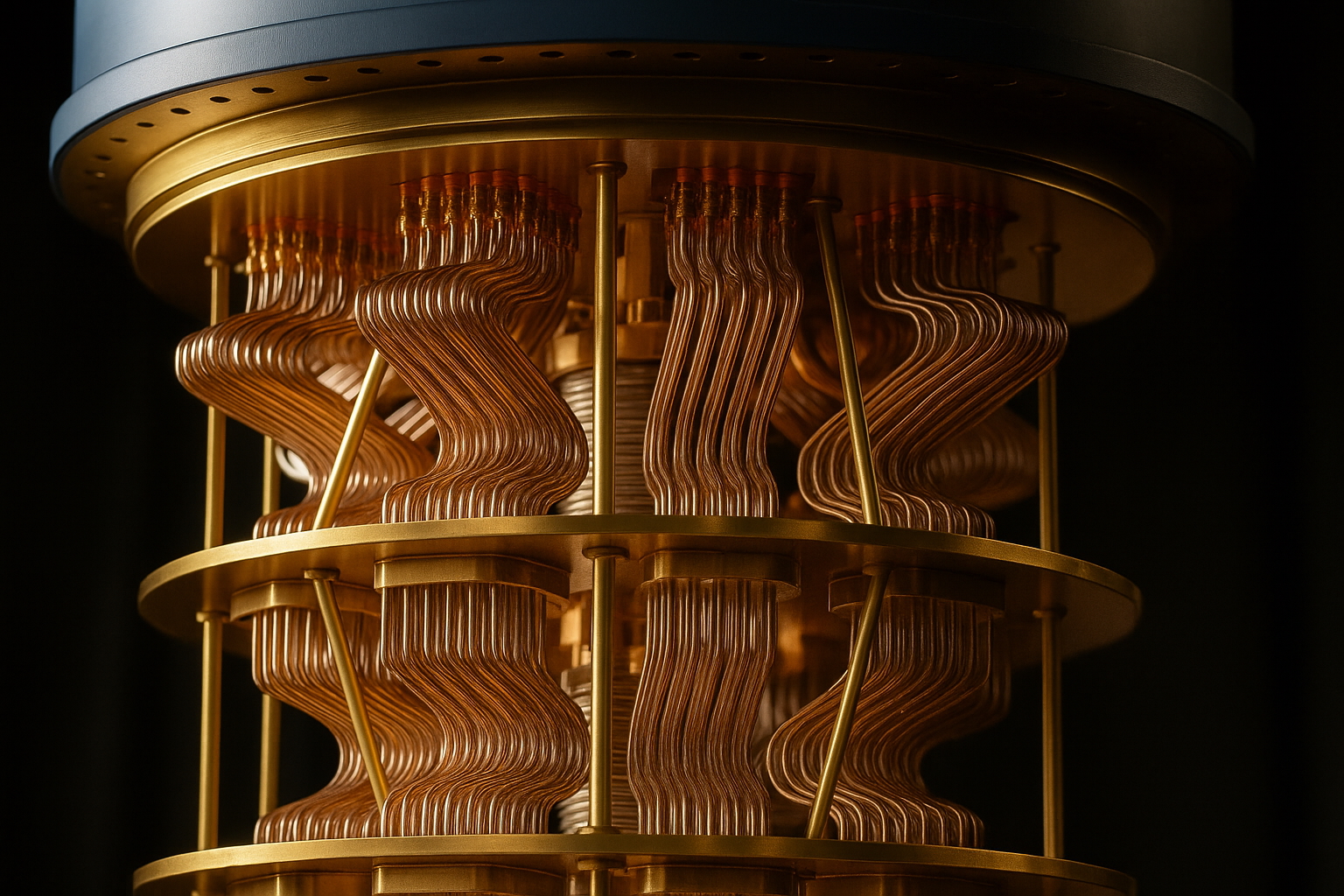The Countdown Has Already Started
Remember Y2K? At least that had a date. Q-Day doesn't come with a calendar reminder. It arrives the moment someone builds a quantum computer powerful enough to crack RSA encryption in hours instead of millennia. When that happens, every HTTPS connection, VPN tunnel, and digitally signed piece of software becomes about as secure as sending passwords in plain text.
Recent research cut the estimated quantum computing requirements from 20 million qubits down to around 1 million. These are physical qubits, and here's the catch: quantum computers need thousands of error-prone physical qubits to create each reliable logical qubit that can actually run useful calculations. Still enormous, but it's the difference between impossible and really, really hard. Most experts now predict Q-Day around 2030-2035, with outlier scenarios in the late 2020s. But here's what should keep CISOs awake: Q-Day's real impact isn't about future attacks. It's about all the encrypted data that adversaries are stealing right now, betting they'll crack it later.
They're Already Coming for Your Data
Nation-state actors didn't wait for quantum computers before starting collection efforts. They're running Harvest-Now-Decrypt-Later operations, systematically gathering encrypted communications today with plans to decrypt them once quantum computing makes it possible.Intelligence agencies are collecting encrypted traffic they can't currently read, storing it for future decryption. Suspicious network routing incidents divert traffic through surveillance points for hours before resuming normal patterns. No immediate damage occurs, but that's exactly what you'd expect from collection operations.
The targets make sense: diplomatic cables, healthcare records, industrial secrets, and financial data all retain value for decades. A 2024 communication could still compromise sources in 2034.
The Simple Math That Should Worry Every CISO
Cryptographer Michele Mosca created a framework that cuts through quantum complexity: How long will your migration take, plus how long must your data stay confidential, compared to when quantum computers might break current encryption?Enterprise migrations typically take 5-10 years. Sensitive data needs decades of protection. Quantum computers arrive around 2030-2035. Do the math: if migration takes 7 years, your data needs 15 years of protection, and quantum computers arrive in 12 years, you're already 10 years behind.
Government mandates reflect this reality. U.S. agencies must complete quantum-safe transitions by 2035. Similar deadlines exist in the UK and EU. These aren't aspirational goals. They're compliance requirements.
Your Attack Surface Is Bigger Than You Think
Quantum vulnerability extends far beyond HTTPS. RSA and elliptic-curve cryptography are embedded throughout IT infrastructure:Network Layer: Load balancers terminate TLS using RSA certificates. VPN tunnels use Diffie-Hellman key exchange. SSH sessions rely on RSA or Elliptic Curve Digital Signature Algorithm (ECDSA) keys. Border Gateway Protocol (BGP) routing uses Resource Public Key Infrastructure (RPKI) certificates. Corporate Wi-Fi authenticates through Extensible Authentication Protocol-Transport Layer Security (EAP-TLS).
Software Integrity: Every update gets validated through cryptographic signatures. Windows updates, iOS apps, Linux packages, firmware upgrades all use RSA or ECDSA. Break those signatures, and malware can impersonate legitimate software.
Authentication: Smart cards use elliptic-curve keys. Trusted Platform Module (TPM) chips have RSA keys embedded. Single sign-on systems sign tokens with RSA certificates. Multi-factor authentication relies on cryptographic device identity.
Data Protection: Database encryption uses RSA to wrap keys. Backup systems encrypt archives with RSA. Email encryption relies on RSA certificates. Blockchain and cryptocurrency use elliptic-curve signatures.
The challenge isn't just scope. Cryptography lives in unexpected places. Legacy systems have keys embedded in firmware. IoT devices authenticate with Elliptic Curve Cryptography (ECC) certificates. Network equipment has device certificates burned in. Some systems can't be upgraded and need architectural workarounds.
Building Your Migration Strategy
The National Institute of Standards and Technology (NIST) published quantum-safe standards in 2024: Kyber for key exchange, Dilithium for signatures, SPHINCS+ as backup. The Internet Engineering Task Force (IETF) is developing hybrid protocols that run classical and quantum-safe algorithms simultaneously.Start with Inventory (2025-2026): Catalog cryptographic usage across your environment. This means more than scanning certificates. Find where RSA and ECC are embedded in firmware, hardcoded in applications, or buried in vendor appliances.
Prioritize based on data sensitivity and longevity. Implement interim hardening: increase RSA key sizes to 4096 bits, enable perfect forward secrecy, shorten certificate lifetimes, reduce data retention periods.
Deploy Hybrid Solutions (2026-2029): Hybrid protocols combine classical and quantum-safe algorithms in the same connection. Start with highest-value external connections: customer websites, APIs, data center VPN tunnels.
Run pilot projects with pure quantum-safe algorithms to understand performance impacts before production deployment. Hybrid approaches directly address harvest-now-decrypt-later threats for new communications.
Complete Migration (2030-2035): Move from hybrid to pure quantum-safe protocols. Deploy new Public Key Infrastructure (PKI) hierarchies using quantum-safe signatures. Replace remaining vulnerable implementations. Sunset support for RSA and ECC to prevent downgrade attacks.
This phase requires the most coordination. Client software, servers, and network appliances all need simultaneous quantum-safe support.
The Window Is Closing
Organizations starting now will navigate Q-Day as routine infrastructure upgrade. Those who wait face emergency migrations under quantum threat pressure, assuming Q-Day doesn't arrive early.The cryptographic standards exist, vendor implementations are arriving, and government deadlines provide concrete targets. What's missing is organizational commitment to start before the crisis hits.
Whether Q-Day comes in 2030 or 2040 misses the point. For sensitive data with long shelf lives, the quantum timeline has already started. The question isn't when quantum computers arrive but whether your organization will be ready.
Key Takeaways
HNDL attacks are happening now while Q-Day approaches around 2030-2035
Mosca's math shows most organizations need to start migration immediately
Quantum vulnerabilities exist throughout IT infrastructure, not just web traffic
Hybrid protocols provide practical migration paths as standards mature
Government deadlines of 2035 are becoming compliance requirements
